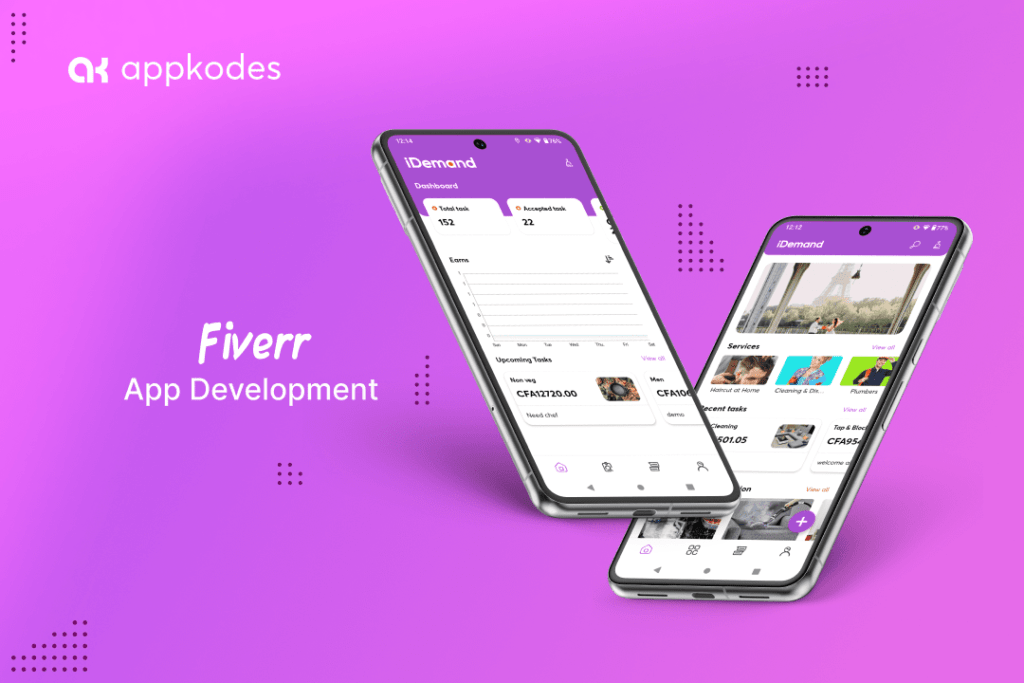The freelance economy is booming, fueled by a growing demand for flexible, on-demand services. Platforms like Fiverr have set a benchmark for connecting freelancers and clients, offering a user-friendly space where projects are created, managed, and completed seamlessly. Entrepreneurs looking to capture a share of this profitable market can consider developing their own Fiverr clone. With solutions such as Appkodes Fiverr Clone, the journey to launching an effective platform is smoother and more efficient, providing a head start with essential features built in.
Research and Planning
Before diving into development, thorough research and planning are crucial. Start by understanding the needs of your target market and what users expect from a freelancing platform. Analyzing competitors like Fiverr, Upwork, and Freelancer.com can reveal gaps that your platform could fill, whether it’s niche services, enhanced user experience, or better support for specific industries.
Setting clear objectives for your Fiverr clone will guide your development process. Do you aim to cater to a broad audience or focus on a niche? Are you planning to offer general services or specialize in a particular field like creative design or tech support? These decisions will shape the platform’s features and marketing strategy.
Key Features for a Successful Fiverr Clone
User-Friendly Interface
A user-friendly and responsive interface ensures that users can easily navigate your platform, find services, and manage their projects without any friction. The design should be intuitive, visually appealing, and mobile-responsive to accommodate users who prefer managing their gigs on the go.
Comprehensive Profile Setup
Freelancers should be able to create detailed profiles showcasing their skills, past projects, and client feedback. Detailed profiles help build credibility and make it easier for clients to assess the freelancer’s capabilities. Similarly, clients should have profiles that include payment verification and service requirements for transparent interactions.
Secure Payment System
A reliable and secure payment system builds trust between users. Integrate multiple payment options such as credit/debit cards, digital wallets, and direct bank transfers. Ensuring that payment transactions are secure and compliant with global standards will prevent fraud and boost user confidence.
Advanced Search and Filtering
Your Fiverr clone should include robust search and filtering features that allow users to find services based on category, budget, delivery time, ratings, and more. Advanced filters enhance the user experience and improve the chances of users returning to your platform.
Ratings and Review System
A ratings and review system is essential for maintaining quality control. Allow clients to leave reviews for completed projects, promoting transparency and trust on the platform. Encourage feedback loops to help freelancers improve and clients feel confident in their choices.
In-App Communication Tools
Smooth communication between freelancers and clients is vital for project success. Include in-app messaging features that enable users to share project details, updates, and files. This prevents miscommunication and streamlines project management.
Project Management Tools
Incorporate basic project management tools like task tracking and milestone updates to help freelancers and clients stay organized and on schedule. These tools simplify workflows and improve the overall user experience.
Technology and Development Strategy
Choosing the Right Tech Stack
Selecting the right technology stack is crucial for the platform’s performance, scalability, and user experience. For the backend, consider using Node.js, Laravel, or Django, while React or Vue.js can be excellent choices for the frontend. Ensure that your tech stack can handle high user traffic as the platform scales.
Scalability and Reliability
Scalability is essential for a growing user base. Use cloud services such as AWS or Google Cloud to provide reliable server infrastructure that can adapt to an increase in users. The platform should also include load balancers to manage traffic and prevent downtime.
Security Measures
User data security is paramount for building trust. Implement encryption protocols, multi-factor authentication, and regular security audits to protect sensitive information and ensure secure transactions.
Mobile Optimization
Optimize the platform for mobile users by creating a responsive design and, if possible, a dedicated mobile app. Push notifications can keep users engaged by notifying them about project updates, new messages, and platform announcements.
Monetization Models
Commission-Based Structure
Charging a commission on each transaction is one of the most common revenue models for freelancing platforms. This aligns your revenue with user activity and scales as the platform grows.
Subscription Plans
Offer premium subscriptions to freelancers and clients for exclusive features like advanced analytics, priority support, and greater profile visibility. This model provides consistent revenue and incentivizes user loyalty.
Paid Promotions
Give freelancers the option to pay for boosted gig visibility or featured listings. This allows them to stand out in a crowded market and can serve as an additional revenue stream for the platform.
Challenges and Solutions
Competition
Standing out in the competitive gig economy requires unique selling points. Consider focusing on a niche or providing enhanced user experiences, such as faster customer support or AI-driven matching algorithms.
Quality Control
Maintaining the quality of services as the platform scales can be challenging. Introduce a verification process for freelancers and use the ratings system to ensure only high-quality services are featured.
User Acquisition and Retention
Attracting users requires strategic marketing efforts. Utilize SEO and content marketing to drive organic traffic and establish partnerships with influencers to increase brand awareness. Retain users by fostering a sense of community through engagement tools like forums and newsletters.
Marketing and Launch Strategy
Invest in SEO to boost your Fiverr clone’s search engine visibility. Utilize social media channels and influencer partnerships to increase awareness. Launch promotions, such as referral programs or introductory discounts, to encourage sign-ups and build an initial user base.
Conclusion
Launching a successful Fiverr clone involves strategic planning, a user-centric approach, and continuous innovation. By integrating key features, utilizing the right technology stack, and implementing strong monetization models, you can create a competitive platform that thrives in the gig economy. Embracing On-demand App Development ensures that your platform remains adaptable, scalable, and equipped for long-term success.













